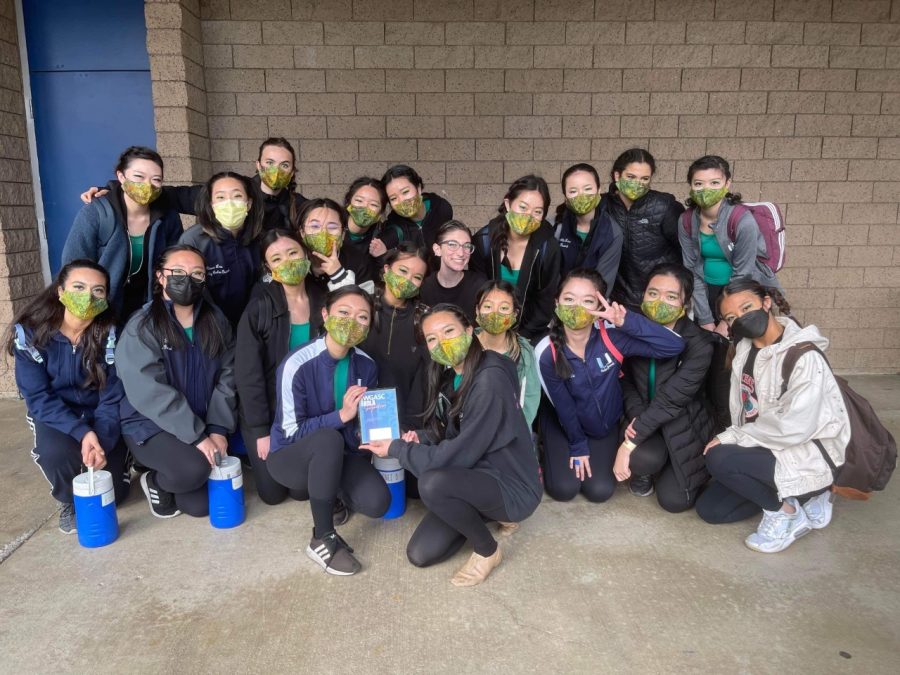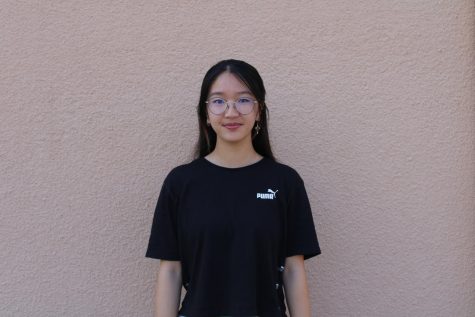Focus on Fine Arts: Color Guard
March 16, 2022
While sports get to celebrate their achievements during seasonal pep assemblies, UHS’ Visual and Performing Arts programs often do not get that type of exposure. This is especially true for UHS’ Color Guard program, which occupies a corner that is tucked away and unknown to most UHS students.
Color guard straddles the line between performing arts and sports, combining elements of contemporary dance and three types of equipment: the flag, rifle and saber. UHS assigns physical education credits to the class, instead of art credits, despite it differing greatly from all other physical education classes. The team performs with the marching band during halftime shows and in regional competitions during the fall, and it competes independently, separate from the marching band, in the winter.
“Basically, we’re always active year-round, and this year will be even more fun because we’ll be going to Hawaii,” third year of color guard member, junior Jamie Kim said.
This year is eventful, as it marks the team’s first full marching and winter season since 2020 and the UHS Marching Trojan Regiment’s quadrennial trip to Hawaii. While the trip is completely optional and requires students and parents to cover all expenses, the color guard program itself also operates exclusively on parent donations.
“As we don’t get school funding, costumes, coach paychecks, [and] competition fees all depend on our donations,” junior and captain Miyako Kato said. “It can definitely be difficult to operate this way as not everyone is able to give or donate the suggested amount.”
Like any other sport, the color guard has daily practices, as well as mandatory weekly practices outside of school. As it is one of the few zero period classes, color guard members have expressed the difficulty of attending early practices.
“I can say that waking up in order to begin rehearsal at 6:50 a.m. is tiresome,” junior Pareesa Masood said. “Sometimes I really don’t want to get out of bed. However, I remember that the contribution I make as a team member is crucial.”
What sets color guard apart, as senior captain Sophia Lee explains, is the unique set of skills the art is based upon and the continual opportunities for improvement.
“There are always more difficult techniques that you can learn, like a different toss or adding another rotation to a toss, which makes it an ongoing pursuit of something harder—and frankly more dangerous,” Lee said. “But that’s what makes it intriguing.”
The guard has served as a valuable learning experience for many members, both in their individual capabilities and teamwork skills.
Kim reflected on how she became more patient after going through the process of “having to pick up new equipment, drop it, and then pick it up again.”
“[It] was definitely a challenging experience for me, especially when I had always given up if I couldn’t get something right away,” Kim said.
However, as Kato puts it, the guard isn’t about one perfect individual, but the coordination and consistency of a whole group.
“For us to perform well as an ensemble, all members of the guard need to be present and attentive to learning choreography, drill and even something as simple as stretches,” said Masood.
Sophomore Maryam Gish shared the team’s upcoming winter guard program, entitled “The Seed,” the same name of the song they’re performing to.
“[It’s] an amazingly powerful song about humanity’s impact on the earth,” Gish said. “The performance conveys the sense of uniqueness and imperfection in nature; for example, our hairstyles are all different and slightly messy.”
The group just competed in their second competition—the Winter Guard Association of Southern California Competition on March 5—where they won second place in their division.
“This winter guard competition season is going pretty well,” when asked about the current season Kato said. “I think our team has a very strong bond and did great in the field season, and I’m hoping the same energy translates for this season.”





